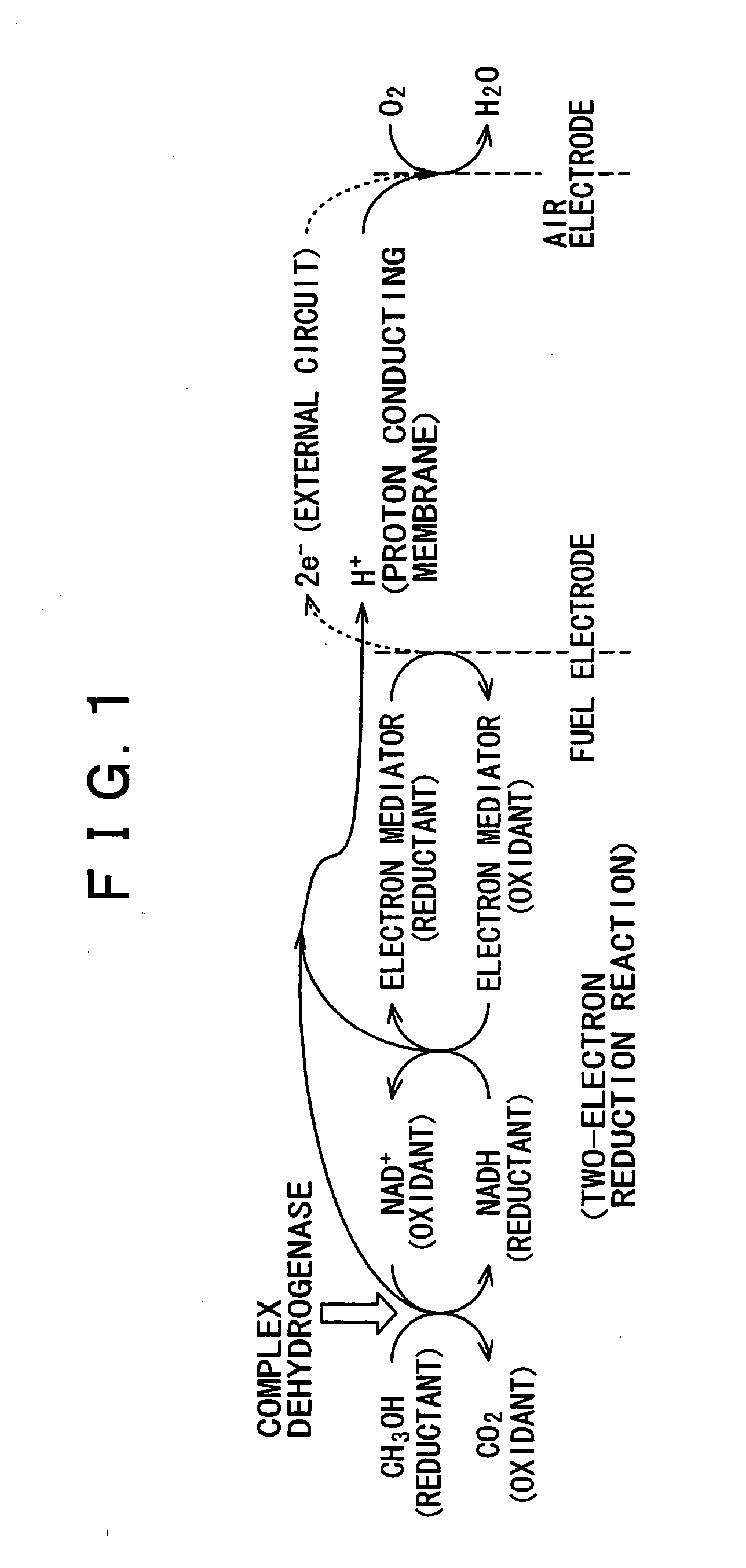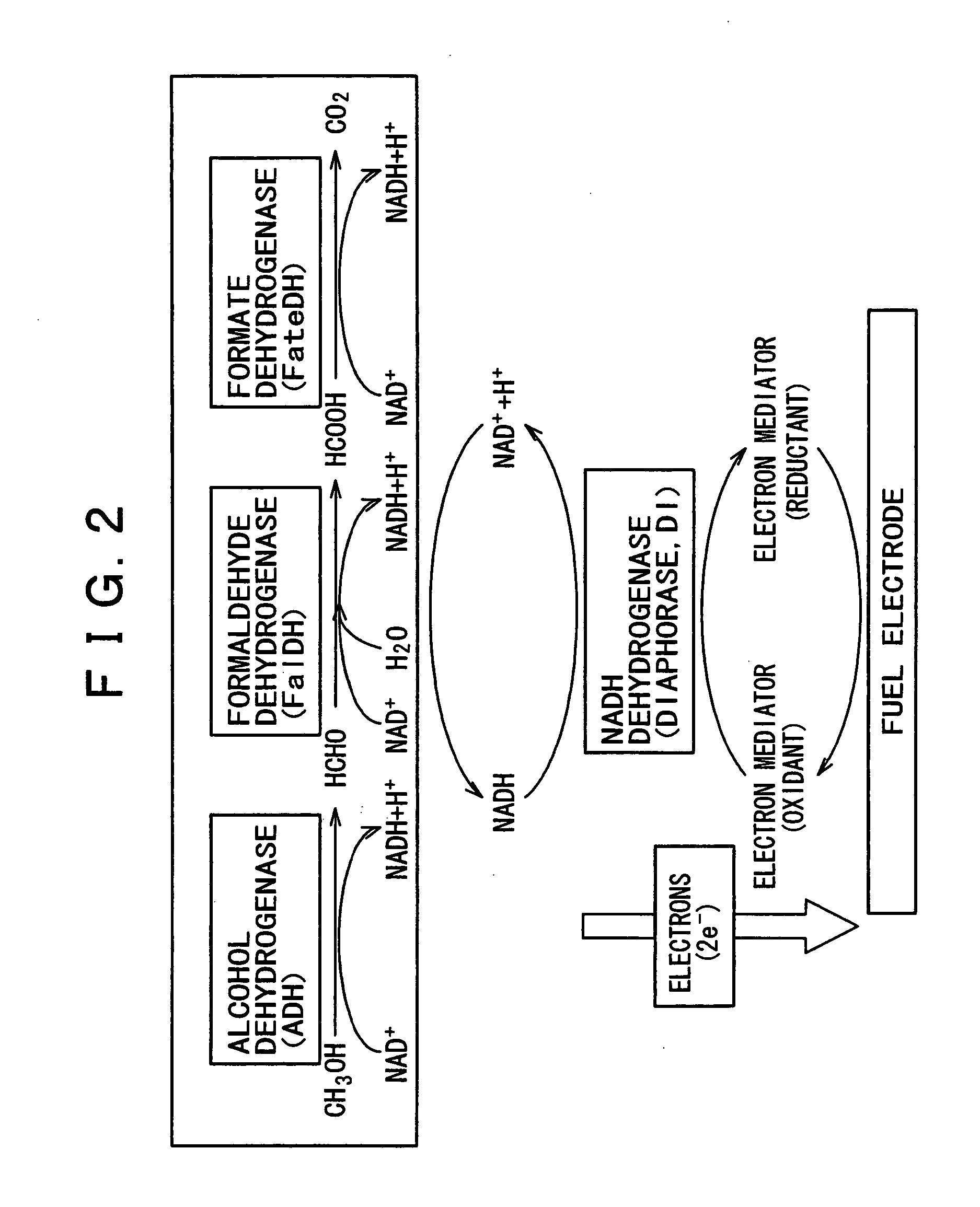Fuel battery
- Summary
- Abstract
- Description
- Claims
- Application Information
AI Technical Summary
Benefits of technology
Problems solved by technology
Method used
Image
Examples
examples
A series of experiments were carried out in the following examples to evaluate the fuel cell of the present invention in an embodiment. In the experiments, enzymes, coenzymes, electron mediators, and fuels are added little by little (of the order of microliters) so that the change in concentration and solution temperature is negligible after their addition.
experiment 1
First, the rate at which NADH is formed was investigated to reveal the optimum enzyme activity of NAD+-dependent dehydrogenase.
example 1
A solution was made from 3 ml of 0.1 M tris buffer (pH 7.0, I.S. =0.3), 5 mM of NAD+, and 1 M of methanol. The solution was purged with argon while stirring. The solution was incorporated with 25 units of ADH, 50 units of FalDH, and 75 units of FateDH. After the NAD+-dependent dehydrogenase had been added to the solution, change in absorbance with time was measured by using an ultraviolet-visible spectrophotometer with an optical path length of 1 cm. The wavelength used for measurement was 340 nm which is specific for NADH. The concentration of generated NADH was determined from the change in absorbance. The temperature of the enzyme solution was kept at 40±1° C.
PUM
| Property | Measurement | Unit |
|---|---|---|
| Power | aaaaa | aaaaa |
| Current density | aaaaa | aaaaa |
| Enzyme activity | aaaaa | aaaaa |
Abstract
Description
Claims
Application Information
 Login to View More
Login to View More - R&D
- Intellectual Property
- Life Sciences
- Materials
- Tech Scout
- Unparalleled Data Quality
- Higher Quality Content
- 60% Fewer Hallucinations
Browse by: Latest US Patents, China's latest patents, Technical Efficacy Thesaurus, Application Domain, Technology Topic, Popular Technical Reports.
© 2025 PatSnap. All rights reserved.Legal|Privacy policy|Modern Slavery Act Transparency Statement|Sitemap|About US| Contact US: help@patsnap.com



